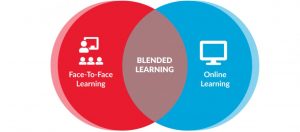From UPSC perspective, the following things are important :
Prelims level: Small and Medium Companies
Mains level: MSME sector updates
The Ministry of Corporate Affairs has expanded the turnover and borrowing thresholds for Small and Medium-sized Companies (SMC), allowing a larger number of firms to benefit from reporting exemptions under accounting norms.
What is the change?
- The MCA has increased the turnover threshold for SMCs to Rs 250 crore from Rs 50 crore, and the borrowing threshold to Rs 50 crore from Rs 10 crore.
- SMCs are permitted to avail a number of exemptions under the Company (Accounting Standards) Rule 2021 to reduce the complexity of regulatory filings for smaller firms.
- Banks, financial institutions, insurance companies, and listed companies cannot be classified as SMCs.
- Further, any company which is either the holding company or subsidiary of a company that is not an SMC cannot be classified as an SMC.
What are the exemptions available to SMCs that are not available to other firms?
- SMC are completely exempted from having to file cash flow statements and provide a segmental break up of their financial performance in mandatory filings.
- SMCs can also avail partial reporting exemptions in areas including reporting on employee benefits obligations such as pensions.
- SMCs are exempted from having to provide a detailed analysis of benefit obligations to employees, but are still required to provide actuarial assumptions used in valuing the company’s obligations to employees.
- SMCs are also exempted from having to report diluted earnings per share in their filings.
- Diluted earnings per share reflect the per-share earnings of a company assuming that all options to convert other securities into shares are exercised.
Answer this PYQ in the comment box:
Q. What is/ are the recent policy initiative(s) of the Government of India to promote the growth of the manufacturing sector?
- Setting up of National Investment and Manufacturing Zones.
- Providing the benefit of single window clearance.
- Establishing the Technology Acquisition and Development Fund.
Select the correct answer using the codes given below:
(a) 1 only
(b) 2 and 3 only
(c) 1 and 3 only
(d) 1, 2 and 3
How does this impact these firms?
- Experts have noted that the move would promote ease of doing business for the firms that would now be included under the definition of SMC.
- The Accounting Standards for SMC, which were notified in December 2006 and amended from time to time, are much simpler as compared to Indian Accounting Standards (Ind AS).
- These accounting standards involve less complexity in their application, including the number of required disclosures being less onerous.
- Ind AS standards are applied to larger firms and are largely similar to International Financial Reporting Standards (IFRS) used in most developed jurisdictions.
Get an IAS/IPS ranker as your 1: 1 personal mentor for UPSC 2024








